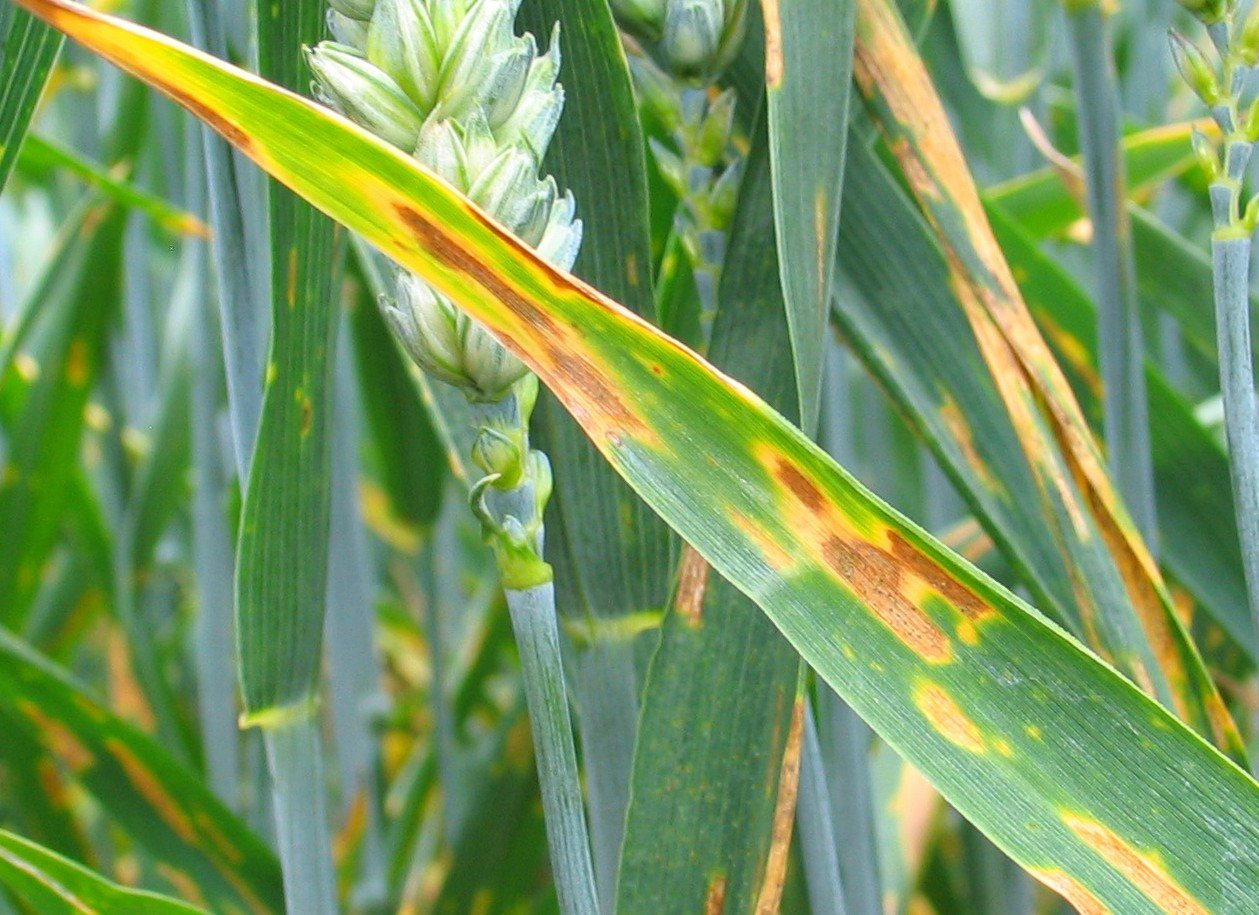Study Smokes out Gene That Turns Fungi into Pathogens
A new investigation by scientists at the Rothamsted Research illuminates how the fungus causes disease in wheat and enables future studies to investigate why Septoria leaf blotch has become a threat to crop production and a serious economic problem.
“We were trying to identify loss of virulence through random mutations of the genome, with one mutation per individual present in over 1000 specimens” recalls Jason Rudd, a molecular pathologist at Rothamsted Research. “Then noticed the failing hyphae in one of them and identified the affected gene with a mutation slap bang in the middle of it.”
Septoria leaf appears over winter on seed or crop residue as well as on the leaves of winter wheat. The dark-colored fruiting structures release spores in the form of droplets which are spread by rain. These spores cause spring infections. Late summer infections are caused by wind-blown spores. Wet windy weather favours disease outbreaks, while dry weather stops disease development. The spores also infect and colonize stems and the wheat head.
The septoria leaf pathogen survives within infested straw, seed and on volunteer wheat and serves as the source of inoculum to start off the
disease cycle in the new crop of wheat. The disease is favoured by splashing rain, high humidity, and temperatures between 20-28 degrees C (68-82 degrees F). The disease characteristically moves upward from infection initiated on the lower leaves within the crop canopy.The gene discovered codes for a protein, a glycosyltransferase (ZtGT2), that enables the fungal hyphae to grow and spread across the surface of a plant, says Rudd, who led the research team from Rothamsted. “The protein is likely involved in producing complex carbohydrates that seem to act as a lubricant, reducing surface friction as the hyphae spread, or as structural components in the hyphae’s cell wall,” says Rudd. Without the protein, the hyphae fail and the fungus stalls.
The research team further came upon the pathogen’s ability to grow in different forms (pleomorphism), as yeast and as filaments. It meant the team could see the mutant fungus growing naturally as yeast before then failing to develop hyphae when presented with a surface to spread across.
Subsequent analysis revealed that the same gene, or a near-identical orthologue, is present in more than 800 genomes from taxonomically diverse fungi, many of which infect plants and humans. However, it is not present in all pathogenic fungi, notably Puccinia rust fungi, which also infect wheat.
The next stage is to characterise the rogue protein, glycosyltransferase. “We need to know what it is actually making, and how it works, which would then allow us to know how to attack it,” says Rudd. “The aim would be to develop a fungicidal spray (because the gene is not present in plants or animals) to stun spores before they become pathogenic.”






























